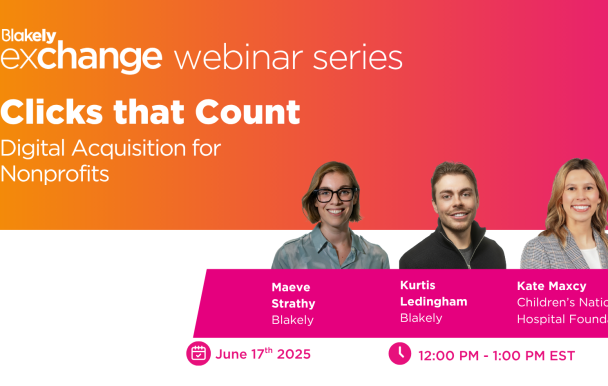Creating the Connections for Hospital Fundraising
Hospital Fundraising has always been a unique area of giving compared to other types of causes, because there are so many variables that drive donors to give. COVID has only accelerated fundraising in hospitals and has added a new dimension of support.
Here are some insights and tips from my personal experience that you may find useful as you navigate and grow your programs moving forward.
The motivation to give is powerful:
Hospitals are a pillar or mainstay in the communities they serve – investing in your community hospital ensures that you and your loved ones have access to care when you need it. It is not surprising that when the COVID 19 pandemic hit, hospital fundraising increased substantially with galvanizing support for healthcare teams and front-line workers, many from donors who had never given to their hospital before.
I would say that one of the most powerful motivations for giving to a hospital is the role that philanthropy plays in the cycle of healing, from patients and their families who had received extraordinary care and whose lives that have forever changed because of that care. Hospital Foundations can play an integral role in this key element of the patient experience. Collaborating and building good partnerships within the hospital can help identify and cultivate meaningful relationships with grateful patients.
TAKEAWAY TIP: Evaluate the patient journey and look for ways to integrate your case for support. You would be surprised how many more patients would give to you if the journey made it easier for them to do so. Make sure you look deeply at the motivations of your donors – from gratitude to paying it forward to tribute giving – and build these into your journeys as well.
What got you here, won’t get you there
Given its community presence, hospital fundraising has typically had events in its fundraising mix. Golf Tournaments, Galas, and Donor Recognition events are just a couple of examples – but one common element is that traditional events offered Hospital Foundations the opportunity to connect and build relationships with donors in person. The pandemic has certainly changed the trajectory of this type of fundraising. Foundations have had to rethink how they cultivate donors and demonstrate impact, focusing on digital virtual platforms to engage with supporters.
This new element will likely evolve as we continue to move through this pandemic, and foundations will likely need to consider their resources and ensure that they have the capacity to be agile to adapt as the trends continue. Take a look at your engagement strategies, especially for high-value giving. Are you taking advantage of technology and video to tell your story?
TAKEAWAY TIP: Look for new and innovative ways to reach your donors. They will likely be impressed at what efficiencies can be gained by thinking outside of the box to showcase the impact of their support. Technology can allow you to take donors places they may have not been able to visit before. It can allow you to engage them and give them virtual experiences you may not have thought possible. Be sure to look at all options available to you when planning your donor engagement strategy.
COVID- now what?
Most of our hospital foundation clients saw a surge of support during COVID-19; many from new supporters that they had never heard from before. Most of this was propelled by growth in digital fundraising, which is not unique to hospitals but is significant, given that many new supporters weren’t previous patients. The motivation of these donors (backed up by our donor attitudes research) indicates that these new supporters want and expect a different experience. Retaining these donors will be key for sustaining future growth, taking new supporters on a journey that demonstrates the impact of their giving but also motivates them to continue to invest in health care.
There are several new motivations and connectors that you need to consider with these donors, including a values connection. These donors are interested in people. For example, both how you treat and honour your staff team and also what your commitment as an organization is to Inclusion, Equity and Accessibility are of great importance to many of these donors.
TAKEAWAY TIP: Insights is your best ally when it comes to understanding donors and building a program that engages them. Using research like our Donor Attitudes Research, undertaking a real affinity research program to dig into your unique donors’ needs and attitudes towards giving, and looking past performance metrics into relationship analytics are all ways that you can harness the power of insights and apply them to your own strategies.
If you haven’t put together an onboarding strategy for these new donors yet, it’s not too late! We can help! Feel free to reach out with any questions to ericka@blakelyjourney.com – I would love to chat!









